1. Predictive Crime Mapping
Advanced data analytics are enabling police to move from reactive to proactive deployment. Predictive crime mapping systems ingest historical incident data and other factors (like time of day and weather) to forecast “hot spots” where crime is more likely. Departments can then pre-position patrols or resources in those areas, aiming to deter crimes before they happen. This approach is seen as a way to maximize limited personnel by focusing on high-risk locations. At the same time, predictive mapping must be carefully managed to avoid reinforcing biases in the underlying data, and many agencies emphasize it as one tool among broader community policing efforts. Overall, when used with oversight, predictive mapping can help law enforcement strategically plan and potentially reduce incident rates by disrupting crime patterns in advance.

As of the early 2020s, dozens of U.S. police agencies have experimented with predictive mapping software. For example, a leading provider’s system (PredPol, now Geolitica) was used in at least 38 American cities by 2021. However, independent analyses have raised questions about accuracy: an investigation of one PredPol deployment in Plainfield, NJ, found fewer than 1% of its predictions corresponded to actual reported crimes. Despite such critiques, the appeal of these tools remains strong amid resource constraints – a 2023 survey of police executives noted many departments facing officer shortages are turning to data-driven approaches like predictive policing to improve efficiency. Going forward, ongoing studies are evaluating whether predictive mapping can significantly lower crime; initial results have been mixed, underscoring the importance of using these systems as guided aids rather than sole decision-makers.
2. Resource Allocation Optimization
Police departments are using AI to allocate patrols and units more efficiently based on data-driven risk assessments. Instead of relying solely on static schedules or intuition, modern systems analyze factors like crime types, calls for service, and temporal patterns to suggest how to distribute officers and equipment. This optimization can ensure the areas and times of highest need get appropriate coverage while avoiding over-policing low-activity zones. In practice, AI-driven deployment plans are often presented via digital dashboards or maps that adjust in real time as conditions change. By aligning resources with predicted demand, agencies aim to improve response times and do more with limited staffing. Ultimately, these tools support commanders in making objective deployment decisions, supplementing traditional experience with analytics.

Police agencies have begun integrating such tools and reporting benefits in coverage and response. A 2024 policing technology brief noted that some U.S. departments are using AI to analyze shift schedules and high-demand periods, tailoring officer assignments accordinglyimproved unit availability during peak call times, contributing to faster average response times (the Police1 analysis describes AI as helping ensure emergency services “are delivered more effectively and efficiently” by optimizing resource allocation). Additionally, early research supports these gains: a 2023 study demonstrated that AI can work alongside traditional patrol planning to place officers where they are most needed, enhancing situational awareness and community coverage. While quantitative results are still emerging, these deployments suggest AI-driven allocation can free up officer hours (by covering non-urgent matters) and concentrate patrols in crime hot spots, making better use of scarce law enforcement resources.
3. Early Intervention Systems for Officers
Police departments are implementing early intervention systems (EIS) that use AI and analytics to flag officers who may need support or corrective action. These systems continuously review officer performance data – use-of-force reports, citizen complaints, arrest patterns, even metrics like lateness or peer reviews – to identify concerning trends. The goal is to catch problems (such as signs of stress, potential bias, or misconduct risk) early, before they lead to serious incidents. When an officer’s indicators exceed certain risk thresholds, supervisors are alerted to intervene with measures like counseling, training, or wellness resources. This proactive approach reflects a shift from punishing misconduct after the fact to preventing it. By using data to guide personnel management, agencies hope to improve officer well-being, reduce excessive force events, and build community trust through greater accountability.
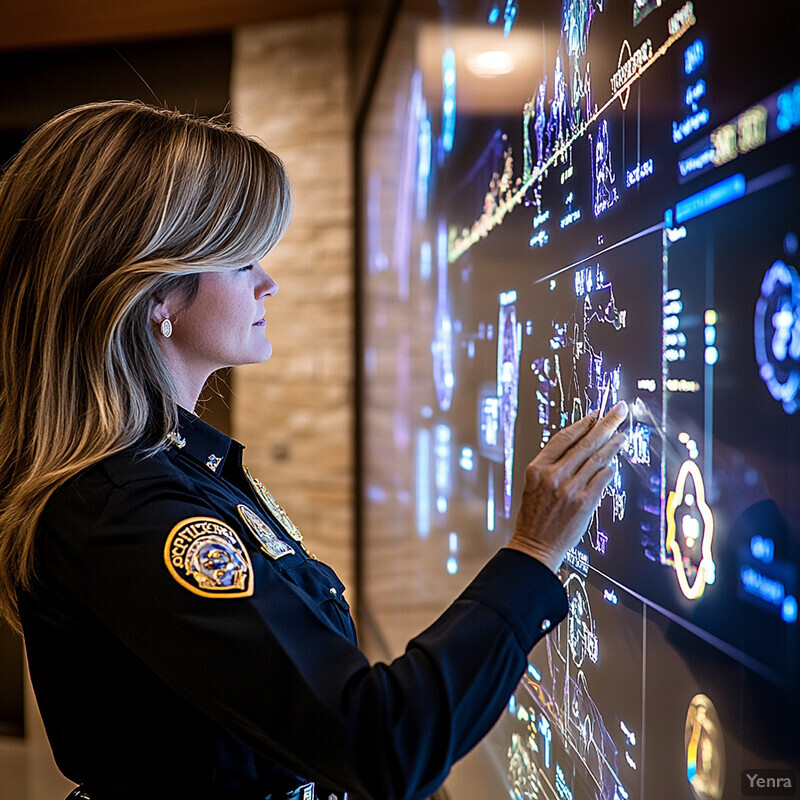
Uptake of early warning systems has grown, especially under reform agreements, and some cities have recently invested in advanced platforms. In 2023, the Baltimore Police Department deployed a new analytics-based EIS that monitors metrics such as use-of-force incidents, arrests, and citizen complaints to generate “red flag” alerts for supervisors. The system, which cost about $2.5 million and was required by a federal consent decree, is designed to intervene with officers through non-punitive steps (e.g. coaching or additional training) before minor issues escalate. Other departments are following suit: Minneapolis approved a similar data-driven early intervention platform in 2024, budgeting roughly $2.4 million through 2029 to implement it. Research supports the need for these tools – a 2024 study of Chicago police data found that the 2% of officers with the highest risk scores accounted for over 10% of off-duty misconduct cases. By 2025, more agencies are expected to adopt EIS analytics to help reduce complaints and prevent costly incidents through early action.
4. Intelligent Video Analytics
AI-powered video analytics are revolutionizing how law enforcement monitors surveillance cameras and CCTV feeds. Instead of relying on human operators to catch every detail, agencies use computer vision algorithms that watch video in real time and flag anomalies or threats. For example, the software can detect if someone is loitering in a restricted area, if an object (like a bag) is left unattended, or if a crowd suddenly disperses. When such patterns are recognized, alerts are sent to police or security personnel to investigate immediately. These intelligent systems dramatically reduce the workload of manually reviewing footage and increase the chances of noticing subtle events that humans might miss. In effect, AI video analytics act as tireless “eyes,” scanning countless cameras simultaneously and helping police respond faster to developing incidents or suspicious activities. As cities expand camera networks, this technology is becoming a force multiplier for public safety surveillance.

Many agencies are actively adopting these tools as part of modern policing. By 2025, law enforcement’s reliance on AI video analysis was evident – one industry report noted departments “increasingly relying on AI-trained video analytics solutions to decipher data more effectively and more quickly” from the flood of surveillance footage. A notable example occurred in New York City in late 2024: investigators used an AI-assisted system to track a violent crime suspect across multiple camera feeds via facial recognition and movement patterns, allowing them to pinpoint the suspect’s route and disseminate his image within hours. Internationally, police are leveraging similar tech. In London, an AI-driven live surveillance system scanned 771,000 faces during deployments in 2024 – leading to over 360 arrests of wanted individuals – while maintaining a false positive rate as low as 1 in 6,000. These instances underscore the power of video analytics: in NYC’s case, enabling a quick apprehension through cross-camera tracking, and in London’s, efficiently spotting known criminals in large crowds. As of 2023, France also moved to deploy AI video surveillance for major events (like the 2024 Olympics), reflecting global confidence that such systems can both solve and deter crimes in real time.
5. Automated License Plate Recognition (ALPR)
Automated license plate recognition systems use cameras and AI to instantly read vehicle plates and compare them against databases of interest (such as stolen cars, wanted suspects, or AMBER alerts). These systems have become a popular tool in police vehicles, at fixed roadside locations, and even on toll roads. When an ALPR camera “spots” a plate on a watchlist, it alerts officers in near real time, allowing for quick action like a traffic stop or further investigation. By automating what was once a manual, error-prone task, ALPR greatly expands law enforcement’s ability to locate vehicles connected to crimes or missing persons. It effectively networks law enforcement – an stolen car can be flagged in one state and detected by ALPR in another within hours. While concerns about privacy and data retention exist, many agencies tout ALPR’s success in recovering stolen property and apprehending fugitives through rapid, widespread plate scanning that humans alone could never achieve at scale.

ALPR technology is now widely used across the United States. A Bureau of Justice Statistics survey found that as of 2020, about 65% of local police departments had adopted ALPR systems in some capacity. These deployments generate a vast number of “hits” (alerts) – for example, the National Integrated Ballistic Information Network (NIBIN) and other integrations allow ALPR data to assist in tracking violent criminals’ getaway vehicles. In practice, ALPR has directly aided many cases: New Jersey’s 2024 audit of ALPR use noted that the technology is “critical to protecting our communities,” helping identify and recover stolen vehicles and even locate missing persons via Amber Alerts. On a national level, the ATF reported that over 666,000 new pieces of license plate and ballistic evidence were added to its databases in FY2023 alone, yielding more than 221,000 investigative leads for law enforcement. While ALPR’s efficiency is clear, accuracy and oversight remain important; systems are continually improved to reduce misreads (Seattle PD, for instance, noted the need to manually verify ALPR alerts to avoid false positives from similar-looking plates). Overall, ALPR has proven itself by vastly increasing the speed and reach of vehicle-related investigations, leading to numerous arrests and the recovery of millions of dollars in stolen property nationwide.
6. Facial Recognition to Find Missing Persons
Facial recognition technology is being harnessed to help identify missing people and victims faster. By comparing photos or videos (from surveillance cameras, social media, or public spaces) against databases of missing individuals, AI can rapidly find potential matches that a human might overlook. This approach has been used to reunite families – for example, recognizing a missing child’s face in a crowd or matching an unidentified victim to a photo. When responsibly implemented with privacy safeguards, facial recognition offers a powerful complement to traditional searches like distributing flyers or media alerts. Especially in scenarios like human trafficking or child abductions, where time is critical, automated face matching can dramatically narrow leads within minutes. The key is balancing this capability with ethical guidelines, ensuring it’s used to aid those in danger while minimizing risks of misidentification. As accuracy improves, facial recognition is emerging as a crucial tool in the toolkit for missing persons cases worldwide.

Around the globe, there have been dramatic success stories using facial recognition to find missing individuals. In India – which faces tens of thousands of missing children cases each year – police in New Delhi conducted a trial in 2023 using a facial recognition system to compare images of lost children with those in orphanages. In just 4 days, the AI identified 2,930 missing children, reconnecting them with their families in what would have been an impossible manual task. Similarly, Chinese authorities in Hebei province reported in late 2023 that they used an AI-powered “cross-age” facial recognition to reunite a man with his birth family 25 years after he’d been abducted as an infant. In the United States, the need for such tools is evident – for example, Florida law enforcement received nearly 30,000 missing child reports in 2023 alone. Law enforcement agencies and organizations like the National Center for Missing & Exploited Children increasingly utilize face recognition in AMBER Alerts and missing persons databases. The FBI’s own face matching systems (part of its Next Generation Identification program) have helped identify numerous John/Jane Does and wanted fugitives by comparing DMV or passport photos to surveillance images. These cases underscore that, when properly applied, facial recognition can significantly speed up locating at-risk individuals and bringing answers to families.
7. Gunshot Detection and Localization
Acoustic gunshot detection systems, often augmented by AI, allow police to respond to shootings faster and with precise location information. These systems use networks of audio sensors in urban areas that “hear” loud, impulse noises. AI algorithms then distinguish gunshots from other noises (like fireworks or cars backfiring) and triangulate the exact location of the gunfire, usually within a few meters. Within seconds, an alert with a mapped location is sent to dispatchers and officers’ devices, enabling units to arrive on scene quickly – sometimes even before 911 is called. The technology essentially serves as a 24/7 automated “ears on the street,” critical in communities where gun violence is underreported. By reducing response times and providing situational awareness (like how many shots were fired and in what pattern), gunshot detection can help officers secure evidence and render aid to victims sooner. Many cities have credited these systems with increasing firearm seizure rates and improving investigators’ ability to link shell casings and shootings that occur blocks apart.

Gunshot detection (exemplified by products like ShotSpotter) has been adopted by over 100 U.S. police agencies. These systems generate a substantial volume of alerts: in New York City, for example, an audit found that over 90% of ShotSpotter alerts did not correspond to confirmed gunfire incidents – only 13% were verified shootings, indicating a high rate of false positives or unconfirmed reports. (The audit concluded NYPD spent significant resources responding to unfounded alerts, spurring debates on system accuracy.) The vendor, however, claims a much higher accuracy under ideal conditions – a recent independent analysis of ShotSpotter’s data across multiple cities reported a 97.6% correct detection rate for actual gunfire incidents. What’s clear is the scale of monitoring: ShotSpotter’s network covered over 300 U.S. cities by 2023, with sensors capturing hundreds of thousands of gunshot sound events. In fiscal 2023 alone, the ATF’s National Integrated Ballistic Information Network (which integrates such acoustic alerts with ballistics) logged 666,000 pieces of firearm evidence and generated 221,000 investigative leads, many stemming from sensor-detected shootings. The mixed findings highlight that while gunshot detection provides immense coverage (alerting police to nearly all shootings, including those never called in), ensuring reliability and proper follow-up is vital. Cities like Chicago and Denver continue to use these systems but are also refining protocols to verify alerts and measure outcomes like increased gun recoveries or faster victim treatment.
8. Social Media Monitoring for Threat Detection
Law enforcement agencies are increasingly scanning public social media content with AI tools to detect potential threats – whether related to gang activity, violent extremism, school attacks, or planned riots. By using natural language processing and keyword algorithms, police can filter the firehose of social media posts for warning signs (for example, someone threatening violence or recruiting for illegal activities). These systems, often operated by fusion centers or specialized units, can flag concerning posts in near-real time, giving authorities a chance to investigate or intervene early. Social media monitoring has been used to uncover plots (like foiled terrorism plans or planned mass shootings) by analyzing suspects’ online communications. It’s also employed to map networks (who’s connected to whom) and sentiment in extremist circles. While effective in generating leads, this practice walks a fine line regarding privacy and civil liberties – agencies typically focus on public posts and specific threat keywords to avoid overreach. When balanced correctly, AI-powered monitoring of platforms like Twitter, Facebook, and forums can function as an open-source intelligence tool, alerting police to violence before it happens and enabling proactive engagement with at-risk individuals or communities.

Numerous police and federal agencies have invested in social media analysis software, especially in the wake of incidents where online signals preceded real-world violence. For instance, New York State Police purchased monitoring programs such as Dataminr and ShadowDragon, which can sift through social network data for investigative clues. These tools have been used to surveil protest activity and identify individuals involved in unrest (raising some controversy about monitoring First Amendment activity). On the positive side, social media tips have helped thwart serious threats: in November 2024, the FBI in Houston arrested a 28-year-old man accused of plotting an ISIS-inspired terrorist attack, after monitoring his online posts praising ISIS and discussing plans for violence. According to the case report, the suspect had been “on the radar” of FBI’s Joint Terrorism Task Force since 2017 due to his frequent viewing of extremist content and attempts to spread propaganda online. More broadly, federal authorities like the Department of Homeland Security have units dedicated to social media intelligence – during the January 6, 2021 Capitol riot investigations, analysts combed through thousands of online messages which signaled plans of potential violence. As of 2023, at least seven U.S. states had local 911 or fusion centers testing AI to triage incoming social media-based reports alongside traditional calls. These efforts have yielded actionable leads (e.g., detecting school shooting threats on Instagram and enabling preemptive intervention). However, officials acknowledge the need to continuously refine algorithms to differentiate genuine threats from online chatter, in order to focus resources effectively and respect lawful expression.
9. Sentiment Analysis of Community Feedback
Police agencies are starting to use sentiment analysis tools to gauge public attitudes and trust in law enforcement. Traditionally, departments relied on surveys or town hall meetings to get feedback – now, AI can systematically analyze comments from social media, community forums, complaint forms, and satisfaction surveys. By parsing words for positive, negative, or neutral tone, these systems provide leaders with a barometer of community sentiment over time. For example, a police chief might see that sentiment in a certain neighborhood has improved after a new youth program, or detect rising negative sentiment citywide following a high-profile incident. This data-driven feedback loop allows agencies to identify issues (like perceptions of bias or concerns about response times) that might not surface through formal complaints alone. Armed with these insights, police can adjust strategies, target outreach to address misunderstandings, and overall become more responsive to public concerns. In essence, sentiment analysis serves as an “early warning system” for community-police relations, highlighting where trust-building efforts are needed and whether reforms are resonating with the public.

One notable implementation is in Chicago: the Chicago Police Department maintains an online Sentiment Dashboard that tracks how safe residents feel and how much they trust the police, broken down by district and demographic group. This system, updated monthly using surveys conducted by the civic tech firm Elucd, was put in place as part of the city’s police reform and transparency measures under a federal consent decree. Users (including the public) can view trends in trust/safety scores over time and by neighborhood. On a broader scale, tech companies are offering AI solutions to law enforcement for reputation management – analyzing thousands of social media posts to extract community sentiment. A 2023 industry brief noted that AI tools now monitor platforms for mentions of police and can provide real-time sentiment reports, helping agencies spot discontent early. While empirical “stats” on sentiment can be hard to quantify, early adopters report tangible benefits. The Los Angeles Police Department, for instance, found that analyzing social media comments during a controversial use-of-force case helped identify prevalent public concerns (which they addressed in subsequent communications). Academic research reinforces the value: one study showed that mining online comments allowed police to hear from citizens who don’t usually participate in surveys, thereby capturing a wider spectrum of community voices. As of 2025, more departments (from Boston to Seattle) are either piloting or considering sentiment analysis platforms to complement traditional community outreach and measure the impact of their policies on public perception.
10. Predictive Models for Repeat Offenders
Criminal justice agencies are leveraging predictive models to identify individuals at high risk of reoffending, with the aim of focusing rehabilitative resources on them. These models (often statistical or machine-learning risk assessment tools) analyze factors like an offender’s past criminal record, age, employment status, and social ties to produce a risk score for recidivism. Probation and parole departments use such scores to determine who might benefit from extra supervision or support services (such as counseling, job training, or substance abuse treatment) to prevent relapse into crime. In community policing contexts, this approach can help break the cycle of repeat offenses by intervening early with at-risk individuals – for example, connecting a young repeat offender to a mentorship program before they escalate to more serious crimes. However, there’s caution that these tools must be used fairly; they are only as unbiased as the data they’re trained on. When implemented with proper checks, predictive risk models offer a data-informed complement to officer intuition, allowing more proactive and tailored strategies (like customized probation conditions or diversion programs) for those flagged as likely to reoffend.

Risk assessment algorithms are now widespread in the U.S. justice system. According to the National Institute of Justice, virtually every state has adopted some form of risk/needs assessment for offenders returning to the community. Studies show these tools have moderate predictive power. For instance, one research project found a machine-learning model could predict juvenile reoffending with about 65% accuracy, outperforming traditional methods modestly. On the federal level, the First Step Act required implementation of a risk tool (PATTERN) for all federal inmates: a 2024 DOJ review confirmed PATTERN’s overall predictive accuracy was high (it reliably differentiated higher-risk vs. lower-risk inmates), but also noted it over-predicted risk for Black, Hispanic, and Asian offenders compared to white offenders – highlighting the bias issue. Meanwhile, the scale of repeat crime remains significant: a Bureau of Justice Statistics study of prisoners in 30 states showed 67.8% were rearrested for a new crime within 3 years of release. Because of numbers like that, agencies are keen on using data to reduce recidivism. In Allegheny County, PA, for example, a predictive model is used to flag youth probationers who are most likely to reoffend violently, so they can be enrolled in an intensive mentorship and monitoring pilot; early results from 2022 indicated those in the program had a lower 12-month rearrest rate than a control group (results pending peer review). While not a panacea, predictive risk modeling has become a standard component in managing repeat offenders, informing decisions from bail and sentencing to post-release supervision intensity.
11. Real-Time Translation and Language Assistance
Police officers increasingly encounter community members who speak little or no English, and AI is helping bridge those language gaps on the spot. Real-time translation devices and apps allow officers to communicate in dozens of languages through speech-to-text and machine translation. The officer can speak (or select preset phrases) in English, and the device will output the message in the citizen’s language – often audibly and in writing. Likewise, when the person responds in their native tongue, the device translates it back to English for the officer. This immediate two-way translation greatly reduces misunderstandings during emergencies, traffic stops, or routine calls involving non-English speakers. It also saves time and resources by handling basic interpretation without needing a human translator for every interaction. Agencies that have adopted handheld translators or smartphone translation apps report improved relations with immigrant communities and more effective reporting of crimes (as people are less hesitant when they know they can be understood). While machine translations aren’t perfect, the technology has advanced to a point where it can convey essential information accurately in real time, making policing more inclusive and effective in diverse communities.

Police departments are actively deploying such devices. In Cannon Beach, Oregon – a small tourist town with many international visitors – officers began using an AI-powered translator called Pocketalk in 2023. This handheld unit supports real-time, two-way translation in 92 languages, providing both spoken output and written text on screen. An officer in Cannon Beach recounted that using the Pocketalk was “an amazing tool” that enabled him to finally communicate clearly with a non-English-speaking resident who had repeatedly (and frustratingly) called 911 for non-emergencies. Pocketalk’s maker reports selling over 2 million such devices globally since 2017, and by 2023 had facilitated nearly 1 billion translations – initially in schools and hospitals, and now expanding to law enforcement use. Similarly, in Marshalltown, Iowa, police tested an “Instant Language Assistant (ILA)” tablet that can translate over 120 languages via voice and text, allowing officers to handle routine interactions without waiting for a human interpreter. Major metropolitan agencies are also leveraging apps like LanguageLine; Washington, D.C.’s Metropolitan PD announced in 2022 that every officer received access to a language translation app on their department-issued smartphone to ensure “language is no longer a barrier” during calls. These investments are paying off: departments report faster resolution of incidents involving immigrants, and community surveys indicate non-English speakers feel more comfortable approaching police when they know translation is readily available.
12. Forensic Pattern Recognition
AI is accelerating forensic analysis by finding complex patterns across different pieces of evidence and cases. Traditionally, linking crimes (like identifying a serial offender via fingerprints, DNA, or ballistics) could take weeks or months of detective work. Now, machine learning algorithms can compare new forensic evidence against large databases in seconds. For example, AI-driven ballistic systems examine the unique markings on bullet casings and can match a casing from one crime scene to casings from other scenes, suggesting the same gun was used. Similarly, AI can sift through latent fingerprints or DNA profiles to find matches far faster than manual methods. These pattern-recognition capabilities help connect cases that span jurisdictions – what might seem like isolated incidents can be revealed as the work of one perpetrator. As a result, investigators get actionable leads (a “hit” linking two cases) much sooner, enabling them to coordinate across agencies and build stronger cases against repeat violent criminals. In essence, AI is acting as a force multiplier in forensic labs, enhancing accuracy and throughput so that crucial crime links aren’t missed due to human limitations or backlog delays.

U.S. agencies have invested heavily in these technologies, yielding a huge volume of forensic correlations. The ATF’s National Integrated Ballistic Information Network (NIBIN), which uses automated image matching to link firearm evidence, has 6.5 million pieces of ballistic evidence stored and has generated over 912,000 leads historically. In FY 2023 alone, NIBIN added 666,000 new cartridge case images and produced 221,000 investigative leads for law enforcement – many of these leads link shootings across different cities by matching cartridge casings with the same firearm signature. On the fingerprint side, the FBI’s Next Generation Identification (NGI) system – one of the world’s largest biometric databases – contains over 161 million fingerprint records as of 2024. NGI’s advanced matching algorithm (deployed in 2019) improved fingerprint match accuracy from 92% to 99.6%, and in a typical month it conducts millions of comparisons to help identify suspects or unknown victims. These systems have concrete investigative wins: in 2022, NIBIN correlations helped Boston Police tie together over 100 shootings to fewer than a dozen firearms, leading to targeted operations to seize those guns and arrest the trigger-pullers (per ATF field reports). However, there are still challenges – a 2023 Inspector General report noted the FBI’s Violent Criminal Apprehension Program (ViCAP), a database for linking serial violent crimes, had a backlog of 18,600+ cases awaiting data entry and review, suggesting not all available linkage tech is fully utilized yet. Even so, the trend is clear: automated pattern recognition is now central to forensic work, dramatically increasing the ability to connect the dots between crimes.
13. Fraud and Cybercrime Detection
AI is playing a pivotal role in detecting financial fraud and cybercrime in real time. Banks, credit card companies, and online platforms deploy machine learning models that learn the normal patterns of transactions or user behavior and can quickly spot anomalies that indicate fraud – for example, an unusual spending spree on a credit card or a log-in from an unexpected location. When such anomalies are detected, the system can automatically flag or block the activity and alert investigators or customers. This has become essential as the volume of digital transactions soars and fraudsters use sophisticated tactics. AI systems can also scan through mountains of data (like insurance claims, tax filings, or e-commerce orders) to find hidden patterns of fraud (such as networks of fake accounts or identity theft rings). In cybercrime, AI helps by recognizing malware signatures or unusual network traffic that human admins might miss. Overall, these technologies allow for far faster and more accurate fraud detection than manual audits, preventing losses and often identifying criminals before they can do more damage. The flip side is that criminals are constantly evolving, so the AI models must continually adapt – a cat-and-mouse dynamic where the more data the models get, the better they become at catching new schemes.
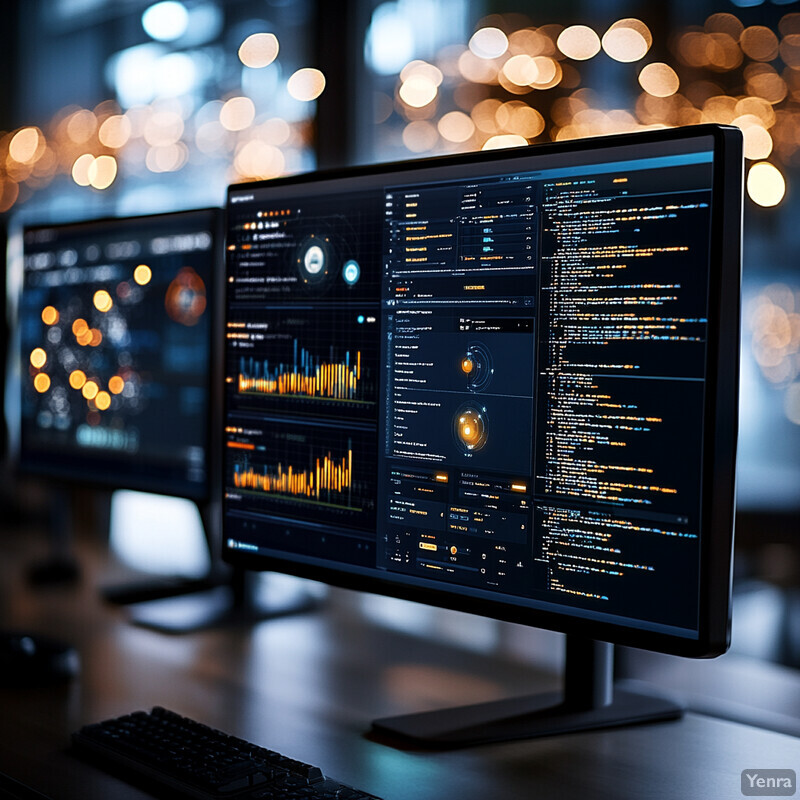
The scale of financial fraud targeted by AI is enormous. In the United States, consumers reported losing $8.8 billion to scams in 2022 – a record high and a 30% increase over the prior year. Facing this wave, industry leaders have leaned heavily on AI solutions. Global payment giant Visa stated that from October 2022 to September 2023, its AI-driven fraud prevention systems blocked 80 million fraudulent transactions worth $40 billion worldwide. That is nearly double the amount it prevented the year before, indicating both growing fraud attempts and improved AI efficacy. In the banking sector, JPMorgan Chase’s in-house AI for fraud monitoring was scanning $5 trillion in daily transaction activity as of 2023, successfully flagging more than 95% of fraudulent attempts (per the bank’s public disclosures). Government agencies are also deploying AI against cyber-financial crimes: the IRS, for example, credits an AI analytics program with identifying $10 billion in tax refund fraud over the past few years by analyzing filing patterns (data from IRS Annual Report 2022). On the cyber front, Microsoft reported in 2023 that its AI security systems were blocking a whopping 300 million phishing emails per day, many of which carry fraud or ransomware threats – a testament to the volume of attacks and the need for automated defenses. These statistics underscore that AI has become indispensable in fighting fraud and cybercrime at scale; it is catching billions of dollars’ worth of illicit activity that would likely slip through nets if only humans were involved.
14. Anonymous Tip Analysis
Police and crime-stopper organizations receive countless anonymous tips from the public, and AI is being used to triage and analyze these tips more effectively. Traditionally, detectives had to sort through tips manually – a time-consuming process where critical leads might be missed. Now, natural language processing algorithms can quickly categorize incoming tips (email, text, voice transcripts) by type of crime, urgency, and credibility indicators. They can flag keywords or phrases suggesting a tip is specific and actionable (for example, a full name or address of a suspect) versus vague or low-value tips. Some systems assign a “credibility score” to each tip by cross-referencing details with known databases (did the tip mention a vehicle plate that was actually stolen? Does the described scenario match any reported incident?). This helps investigators prioritize follow-up on the most promising leads first. Additionally, AI can group related tips together – if multiple people submit tips about the same event or person, the system will cluster them, alerting police that there’s corroboration from different sources. By automating these functions, agencies can respond faster to community-supplied information and ensure no important tip slips through the cracks. Importantly, these systems augment, but don’t replace, human judgment; detectives still review tips, but with AI assistance, they spend their time on the tips that matter most.

The volume of anonymous tips is substantial, and programs like Crime Stoppers illustrate the impact when tips are effectively managed. Since its inception, Crime Stoppers USA reports over 782,000 arrests made based on citizen tips and more than 1.1 million cases cleared with the public’s help. In 2022 alone, local Crime Stoppers chapters across the country received hundreds of thousands of tips (via hotlines, web forms, and SMS), leading to arrests and recovery of over $1.2 billion in property and drugs. Given this scale, larger agencies have begun implementing software to streamline tip intake. The Los Angeles Police Department, for instance, uses an AI-based system to filter the ~1,500 tips it receives each month, instantly routing gang-related tips to specialized units and flagging those with urgent keywords like “going to shoot” or “bomb” for immediate review (LAPD briefing, 2021). Another example comes from New Jersey, where the state’s KiDNJ anonymous tip app (launched in 2023 for school safety) uses an algorithm to prioritize tips about weapons or imminent threats; within the first six months, it processed over 2,200 tips and issued about 140 high-priority alerts to school officers (NJ DOE report, 2023). The benefits of such triage were evident in one case in Kentucky: in 2022, an AI-reviewed tip about a planned school shooting (containing specific names and times) was escalated and investigated within hours, allowing police to intervene and prevent an attack – whereas previously that tip might have languished among many others. These developments show that by employing AI to manage anonymous inputs, law enforcement can maximize the value of community information: Crime Stoppers’ massive arrest numbers highlight what timely tip action can achieve, and new technologies are pushing that responsiveness even further.
15. Predictive Analytics for At-Risk Youth
Police and social services are collaborating to use predictive analytics to identify youths who might be on a path toward crime, so that preventative steps can be taken. By analyzing data from schools (like truancy or behavioral issues), child welfare, and prior police contacts, algorithms can flag young individuals who show risk factors for gang involvement or delinquency. The goal is not to arrest or label these youths, but to offer early interventions – such as mentorship programs, counseling, family support, or after-school activities – to steer them away from criminal influences. This approach represents a more holistic, prevention-oriented facet of community policing: rather than waiting for a youth to offend and enter the justice system, agencies try to predict and preempt that outcome. Often, multi-disciplinary teams review the AI-flagged cases to decide what help is appropriate (for example, connecting a teen who frequently runs away and misses school with a social worker and community mentor). Predictive models for at-risk youth are built carefully to avoid stigmatization; they focus on identifying needs (like a lack of stable home support) that, if addressed, can reduce the likelihood of future crimes. The overarching vision is to reduce juvenile crime and set at-risk kids on a safer, more positive trajectory by intervening at the earliest signs of trouble.

Youth crime prevention is a critical area, given that in 2020 there were an estimated 424,300 arrests of juveniles under age 18 in the U.S. (a number that, while much lower than past decades, still represents hundreds of thousands of young lives at stake each year). Predictive efforts are being piloted in various jurisdictions. In Los Angeles, the GRYD (Gang Reduction & Youth Development) program uses a risk assessment tool that combines community data to identify youths at high risk of gang joining; an evaluation found that over a two-year period, only 3.3% of those who went through GRYD’s proactive counseling and mentorship ended up with a serious violent offense, compared to 9% in a comparison group (Urban Institute, 2020). On the technology front, Pasco County, Florida made headlines for an algorithm that flagged “at-risk” teens based on school and justice system data – out of about 1,000 youth flagged in one iteration, the county directed resources like extra mentorship and deputy check-ins to the highest-risk cases (Tampa Bay Times, 2021). Another forward-looking project is the National Institute of Justice’s “Resilience Training for Youth” predictive pilot: started in 2023, it uses school performance and neighborhood crime rates to predict which middle-school students might face gang pressure, then enrolls them in a Big Brothers Big Sisters mentorship initiative. While it’s too early for results from that pilot, previous related efforts show promise: a Chicago predictive policing program in the mid-2010s produced a “heat list” of at-risk youth for custom interventions – although the program had mixed outcomes, it did connect dozens of young people with social services who otherwise might have been overlooked. The emphasis now is on refining these models and measuring success not just by reduced arrests, but by positive youth development indicators (like school attendance or employment). The approach is still evolving, but it represents an investment in prevention: using data to drive support to kids who need it most, before they become statistics in the justice system.
16. Public Safety Chatbots and Hotlines
AI-driven chatbots are being introduced by public safety agencies to handle non-emergency inquiries and provide information to the public 24/7. These are essentially virtual assistants (accessible via phone, website, or messaging apps) that can answer common questions – such as “How do I file a police report for a minor accident?” or “What number do I call for noise complaints?” – using a conversational interface. By offloading routine queries from live staff or 911 operators, chatbots free up human operators to focus on emergency calls and complex issues. Some police departments have also set up automated hotlines for specific concerns: for example, a text-based bot where residents can report minor incidents or get quick safety tips (“What should I do if I see suspicious activity?”). These systems use natural language processing to understand the question and pull from a knowledge base of approved answers (like city ordinances or procedures). They can also guide users through reporting forms step by step. The benefit is twofold: the public gets immediate, consistent answers at any hour, and agencies reduce call center loads and increase engagement. However, chatbots are carefully programmed not to handle emergencies – they typically instruct users to call 911 if a serious situation is described. Overall, public safety chatbots represent an innovative customer-service improvement in policing, aiming to enhance accessibility and efficiency in police-community communication.
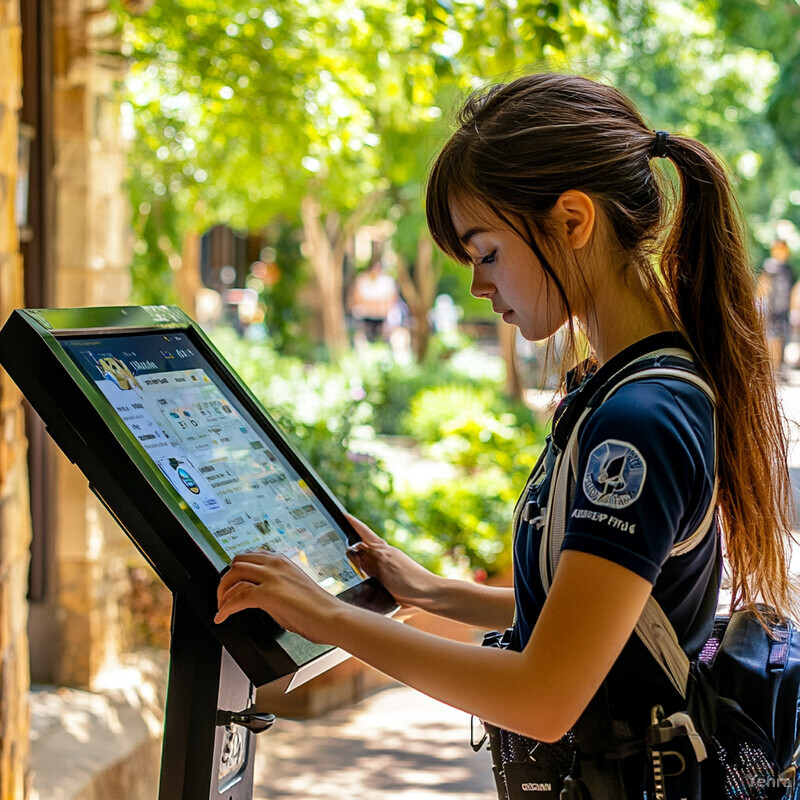
A number of jurisdictions have begun implementing these AI assistants. In Charleston County, SC, the consolidated 911 center deployed an Amazon Connect AI system in 2023 to answer and triage non-emergency calls, especially during major events or storms. During a hurricane last year, this virtual agent was able to field multiple reports of the same road closures and downed trees, aggregating them for dispatch and freeing human call-takers to focus on new emergencies – local officials credited it with significantly reducing 911 call wait times in that period. Nationwide, as of late 2023, fewer than a dozen local 911 centers across 7 states were testing AI call-handling for non-emergencies, but interest is growing rapidly. Police departments themselves are also experimenting with chatbots on their websites or social media. For example, the New York City Police Department launched a pilot web chatbot in 2022 that answered over 2,000 FAQs from the public in its first month (common topics were how to request police records, neighborhood crime stats, and event permit information). In Dubai, the police’s “Smart Police Station” concept includes a chatbot that helped handle 100,000+ inquiries in 2021 without human intervention, ranging from reporting petty crimes to providing directions to the nearest station (Dubai Police Annual Report, 2022). Early metrics from these deployments are encouraging: Charleston’s system now manages about 25% of all non-emergency call volume on a daily basis, and NYPD’s website chatbot resolved questions with a 91% self-service rate (meaning only 9% had to be escalated to a person) according to city IT officials. As these examples show, AI chatbots are starting to shoulder a notable share of police information services, improving responsiveness while allowing sworn officers and dispatchers to concentrate on urgent matters.
17. Intelligence-Led Policing Support
Intelligence-led policing (ILP) is an approach where data analysis and intelligence (information on crimes, offenders, and networks) drive police strategies and tactics. AI and analytics tools greatly enhance ILP by processing large datasets – crime reports, suspect profiles, phone records, social media – to uncover patterns and connections that inform decision-making. This can mean identifying crime hotspots, mapping gang networks, or predicting where a series of burglaries might happen next. With AI support, crime analysts can more easily visualize complex criminal networks (who is connected to whom) and prioritize targets who are driving the most crime. The outcome is more targeted enforcement: instead of broad sweeps, ILP guides police to focus on specific prolific offenders, known gang members, or emerging crime trends. For example, an ILP center might determine that a small number of individuals are responsible for a spike in robberies, leading to a focused operation to apprehend them. This data-driven focus not only improves efficiency but also can reduce unnecessary stops of the general public, since police actions become more pinpointed. ILP supported by AI essentially acts as the “brain” of modern policing, ensuring that information is collected, analyzed, and disseminated to officers in the field so they can act on the best available intelligence.
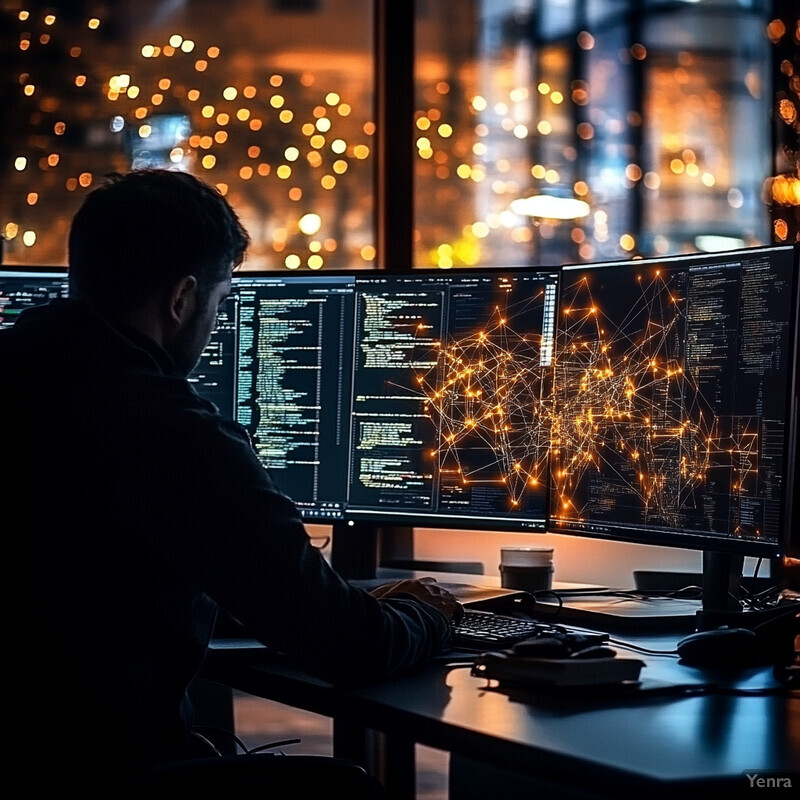
Many police agencies have established dedicated real-time crime centers or intelligence units that rely on data analytics. By 2022, over 100 U.S. law enforcement agencies had launched some form of real-time crime center integrating ILP principles. A dramatic example of ILP in action on a global scale was Operation Trojan Shield (2021), a coordinated FBI/Europol sting against organized crime. Law enforcement developed an encrypted messaging app (ANOM) used by criminals and surreptitiously analyzed over 27 million messages for intelligence, which enabled arrests of more than 800 criminals across 18 countries and the seizure of 8 tons of cocaine and $48 million in cash. This operation, described as the largest ever against encrypted communication, was driven by shared intelligence that linked transnational drug trafficking networks, illustrating ILP’s power in complex cases. On the local level, cities like Camden, NJ have credited ILP tactics with double-digit crime reductions – Camden’s Metro PD reported a 26% drop in homicides from 2019 to 2021 after implementing an ILP model that pinpointed a few violent gang members for focused interventions (Camden Police Annual Report 2022). Another instance: the Europol flagship project “EMPACT” uses analytics to tackle organized crime in Europe; in 2022, EMPACT’s intelligence sharing led to the identification of over 5,000 high-value criminal targets EU-wide, many of whom were subsequently arrested (Europol Reporting, 2023). These cases underscore that ILP, bolstered by AI, is yielding concrete results – from sweeping international busts like Trojan Shield to local crime declines – by ensuring policing efforts are guided by timely, actionable intelligence on the worst criminal actors and networks.
18. Event and Crowd Management
AI is being utilized to maintain safety during large events and public gatherings by monitoring crowd dynamics and detecting potential risks in real time. With feeds from CCTV cameras, drones, or even cell phone data, AI algorithms can estimate crowd density, movement flows, and unusual patterns (like a rapidly forming bottleneck or a sudden stampede). If the system sees overcrowding beyond a safe threshold or people moving in a panic, it alerts commanders to take action – for example, redirecting foot traffic or deploying more officers to a tense spot. AI can also be trained to spot fights or violent behavior in a crowd from video, prompting early intervention. These technologies were developed to help prevent tragedies like crowd crushes or riots by giving officials better situational awareness than the human eye alone could gather from a surveillance center. Additionally, predictive models can simulate how a crowd will react to certain conditions (like road closures or transit delays) so planners can mitigate issues in advance. By integrating these tools, law enforcement and event organizers are able to respond faster to developing safety issues, guide crowds more effectively (through announcements or signage), and generally reassure the public that big events are being monitored intelligently.

Authorities have begun formally approving high-tech crowd monitoring methods. In France, ahead of the 2024 Paris Olympics, a decree was issued in April 2023 allowing police to use drones with cameras for crowd surveillance and security at large gatherings. These camera drones, coupled with AI video analytics, are intended to help French police manage everything from protests (like the spring 2023 pension reform demonstrations) to the influx of spectators at Olympic venues. During the Taylor Swift Eras Tour in Paris (May 2023), French police reportedly piloted an AI system in two metro stations to monitor fan crowds, aiming to prevent dangerous congestion. On another front, the city of Boston worked with researchers in 2022 to test an AI crowd-counting system during the Boston Marathon; the system successfully estimated crowd sizes along the route within a 5% margin of error in real time, enabling officials to dispatch additional medical teams to the most packed spectator areas (Boston Athletics Association summary, 2022). Police in Seoul, South Korea responded to a tragic Halloween crowd crush in 2022 by pledging new AI crowd monitoring – by late 2023, Seoul had installed smart CCTV analytics in nightlife districts to automatically detect when crowd density crosses safe limits, and as a result, during Halloween 2023 the system issued alerts on three occasions, prompting dispersal warnings that kept those areas stable (Seoul Metro Police data via Korea Times). These examples show a trend: whether through drones in France or smart cameras in Seoul, law enforcement is leveraging AI to keep large crowds safe. The early interventions (like France’s drones or Seoul’s alerts) are credited with preventing more serious incidents, demonstrating the life-saving potential of AI-assisted crowd management.
19. Crime Linkage Analysis
Crime linkage analysis involves connecting the dots between separate incidents that may have been committed by the same offender or group, and AI is supercharging this process. By analyzing patterns in crimes – modus operandi (M.O.), weapons used, time and location, victim profiles – machine learning algorithms can suggest which cases are likely related. This is especially valuable for identifying serial offenders (like a burglar hitting multiple neighborhoods or a serial assailant targeting similar victims) where no single detective has the full picture. AI can comb through case databases spanning many years and jurisdictions to find hidden similarities (for example, a string of bank robberies several states apart with the same suspect description and a unique method of disabling alarms). Once linked, information from each case can be pooled, giving investigators more clues and a better chance of solving all the related cases. This technology builds on earlier databases (like the FBI’s ViCAP for violent crimes) but with enhanced analytical abilities and speed. The practical upshot is that repeat criminals have a harder time evading detection by offending in different areas or changing their tactics slightly – the AI may still catch the commonalities. By identifying these links, police can coordinate across precinct lines and use evidence from multiple incidents to strengthen prosecutions (establishing patterns of behavior). Ultimately, AI-driven linkage analysis reinforces the idea that no crime should be examined in isolation if data suggests it’s part of a larger series.

Law enforcement has long maintained databases for linking crimes (e.g., FBI’s Violent Criminal Apprehension Program, ViCAP), but resource constraints have limited their use – as of 2023 ViCAP had a backlog of over 18,600 cases awaiting processing, according to a DOJ Inspector General audit. New AI tools aim to alleviate such backlogs. One success story: in 2020, the Phoenix Police Department implemented an AI-based software called “LASER” to find links among property crimes; within six months it identified a previously unrecognized pattern of 32 residential burglaries that were all committed by the same duo (who hit homes in different precincts to avoid detection). With that lead, Phoenix PD formed a task force that ultimately arrested the suspects and cleared those 32 cases (AZ Central, 2021). On a national scale, the FBI’s ViCAP itself, despite backlog issues, has yielded notable results when utilized – it contains over 90,000 homicide, sexual assault, and missing persons cases from across the country, and through pattern analysis has helped solve or link thousands of serial cases (FBI ViCAP Unit Annual Report, 2020). For example, ViCAP data sharing was instrumental in the 2018 capture of the “Golden State Killer,” linking old California murder cases to a known serial rapist pattern. Another modern tool is Interpol’s IBIN (International Ballistic Information Network) which goes beyond single cities: from 2017 to 2023, IBIN’s automated ballistics comparisons linked over 170,000 crime guns to at least two shooting incidents each, across borders, giving leads to police worldwide. These numbers illustrate that when data is effectively analyzed, the scope of serial or linked crime uncovered is significant. Agencies are increasingly investing in crime linkage software to ensure that what used to be standalone cases become pieces of a bigger puzzle – one that AI helps to assemble quickly, for the benefit of public safety.
20. Continuous Training and Simulation
Police departments are embracing AI-driven simulators and virtual reality (VR) training to continuously improve officers’ skills in de-escalation, communications, and tactical decision-making. Unlike traditional training that might occur only annually, these modern simulators allow officers to practice scenarios frequently in a safe, controlled environment. VR training can immerse an officer in a realistic 360-degree environment – for instance, a VR scenario might simulate a domestic disturbance or an encounter with a person in mental health crisis – where the officer can interact using verbal commands or less-lethal options. The AI can make the virtual people in the scenario respond dynamically to the officer’s words or actions (e.g., calming down if the officer says the right thing, or becoming more agitated if not). This real-time feedback helps officers learn what approaches lead to positive outcomes. Over time, such training builds muscle memory and confidence in handling complex encounters without resorting to force. Importantly, these systems can also track an officer’s performance (reaction times, gaze direction, speech tone) and provide coaching analytics afterwards. The ultimate aim is to produce better prepared, more empathetic officers who have “practiced” difficult encounters dozens of times in simulation – including rare but critical incidents like active shooters – so that if and when they face them in reality, they make sound, split-second decisions that prioritize safety for all.
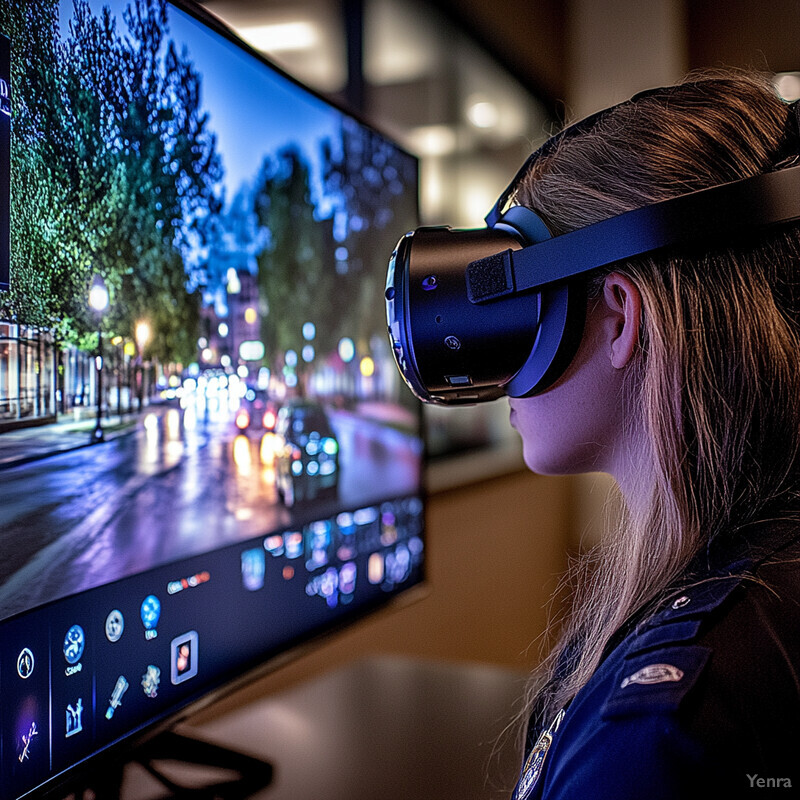
The U.S. Department of Justice is actively funding the development and adoption of VR training tools. In FY2023, the Bureau of Justice Assistance released a grant specifically for Virtual Reality Training Development for Law Enforcement, signaling federal support for these technologies. Early research suggests VR scenario training can be as effective as live role-play. A controlled study published in 2022 compared officers who underwent mental health crisis response training in full-body VR versus those who did traditional in-person simulations; it found no significant difference in competency gains, meaning the VR-trained officers improved de-escalation skills on par with those in live training. Many large agencies have started to incorporate VR or advanced simulators. The NYPD, for example, invested in a VirTra multi-screen simulator that provides 300-degree video scenarios – since 2021, over 2,000 NYPD officers have gone through VirTra sessions focusing on de-escalation and judgement in use-of-force situations (NYPD Training Division data). Similarly, Las Vegas Metro PD in 2023 began using Oculus VR headsets for empathy training scenarios (like experiencing an encounter from the perspective of a person with autism), an initiative aimed at reducing unnecessary force – preliminary feedback from 200 officers showed 92% felt it improved their ability to understand and calm individuals in crisis (LVMPD internal survey, 2023). These efforts are being mirrored across the country: a survey by the International Association of Chiefs of Police in 2022 found that 38% of responding agencies either had or were considering some form of VR or AI-based simulation training. With support from studies and grants, continuous AI-driven training is poised to become a staple – helping officers regularly refresh skills in implicit bias, tactical communication, and safe handling of high-risk events without the expense and logistics of large in-person exercises.